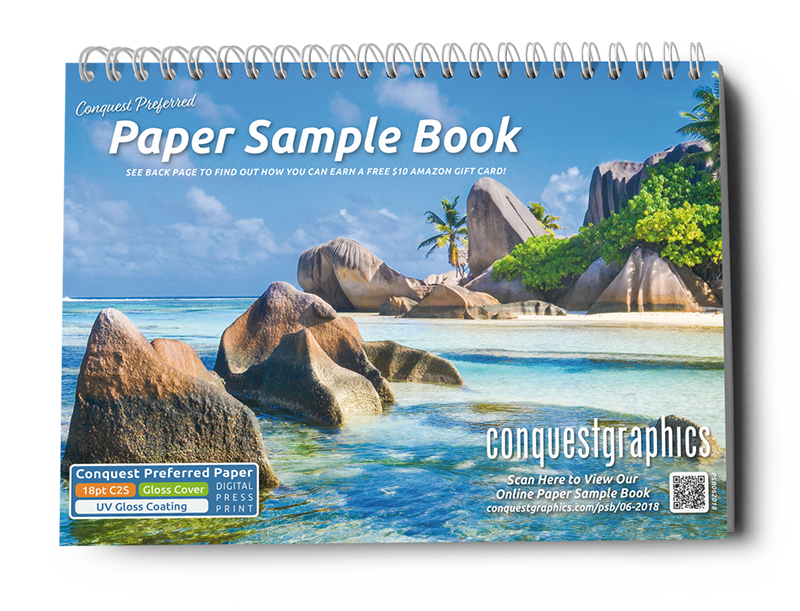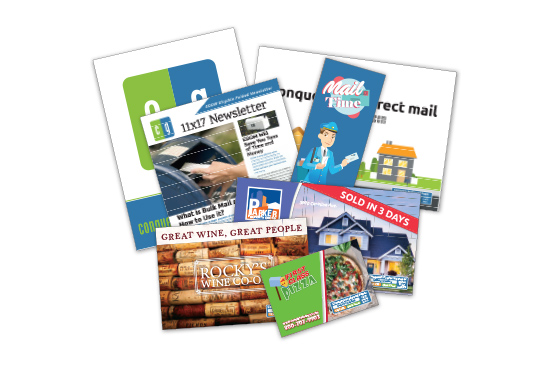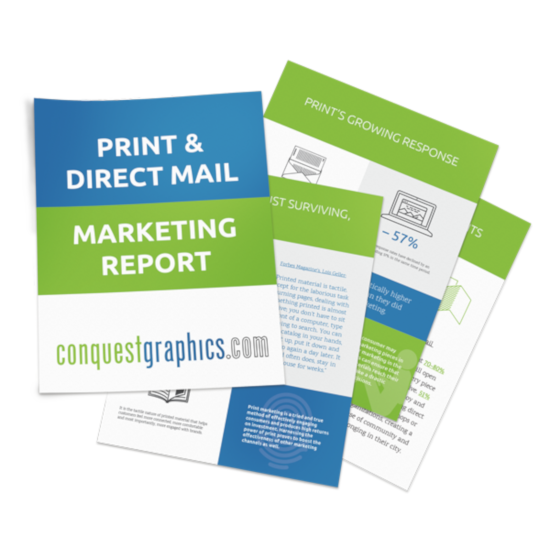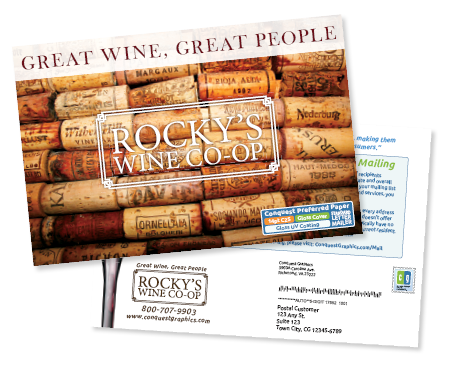
Ordering a mailing list can be an unexpectedly difficult task due to the importance of seemingly insignificant details and the usage of mailing list jargon common among many brokers and managers. To help you avoid and overcome these potential obstacles, we’ve developed a short and simple guide to ordering mailings lists that provides the insight and specific details you’ll need to know when purchasing or renting mailing lists for your next direct mail marketing campaign.
Step 1. Determine the audience for your mailing

This might seem like one of the more obvious things to do when selecting a mailing list, but it’s fundamentally the most important step to sending effective direct mail. Whoever ultimately receives your piece of direct mail should align with the marketing goals you thought up when you first conceived the mailer.
The importance of finding a good mailing list should never be underestimated. Even with the very best design and marketing messaging, a direct mail piece could still fall flat if not sent to the appropriate audiences.
If your marketing goal, for example, was to reach parents to let them know about a back-to-school sale you have coming up, mailing a promotional coupon to all single 75+ year old men in a 10-mile radius might not do you any good.
But what if your target audience is a very general or broad set of businesses and consumers? For that purpose, there are convenient options provided through the USPS such as Every Door Direct Mail (EDDM) or Saturation Mail.
How are EDDM and Saturation Mail Different from Direct Mail Sent to a Mailing List?
EDDM mailings don’t use recipient parameters to determine who gets a piece; rather, every single address along a given mail carrier’s route will receive your mailed piece. When purchasing EDDM, you simply must choose which geographical region (based on ZIP codes or carrier routes) you want to target with your mailer. Since EDDM is so easy to sort for the USPS, choosing to mail via this method comes with a slight discount on postage costs.
Unlike EDDM, which is delivered to every household on your chosen route, saturation mail does not require you to hit every mailbox. This allows you to target more specific demographics, so long as you are mailing to a large percentage of each route.
Preparation for saturation is much more involved than EDDM, each mail piece must be addressed and labeled with a ZIP code. If you are using saturation mail, it is highly suggested that you find a printer with variable data printing that is also a bulk mailer.

The drawback for each of these types of bulk mailing is that you will likely have a much higher bounce or burn rate; that is, lots of your printed and mailed pieces will go to waste.
Direct mailing to a mailing list provides the specificity and strategic approach to marketing audiences that can give you a much higher response rate and in turn, a much higher ROI.
Mailing lists are divided into two high-level categories, consumer lists and business lists. As their names suggest, the consumer list will only contain consumer contacts and the business list will only contain business contacts.
Once you determine whether you want your mailing to go to businesses alone, consumers alone, or both businesses and consumers, you can proceed to choose the other types of parameters that will help easily identify those who align with your target audience in the real world.
Knowing the general types of information that are commonly used for building mailing lists can save you valuable time and money working with list brokers and managers. To give you an idea of the types of details that go into compiling a list, we’ve included some of the most common list parameters below, separated by whether they’re pertinent to business or consumer lists:
Consumer Lists
Standard Consumer Lists
- Age, Income, Gender
- Marital Status
- Households with Children
- Age & Gender of Children
- Households with Seniors
- Housing Type
- Owner / Renter
- Home Value
- Year Built
- Length of Residence
Premium Consumer Lists
- Home details (such as age of home or purchase date)
- Credit information, including credit score
- Presence of phone numbers
- Buying habits/activities (for example, people interested in sports or gardening)
- Health
- Life stages (new parents, empty nesters, etc)
- Car/automobile information
Business Lists
Standard Business Lists
- Employee numbers
- Sales Volume
- Year Started
- Minority Owned Business
- Business Type
Premium Business Lists
- Business Detail
- Exact Employee Size
- Exact Sales Volume
- Franchise Indicator
- Owner’s Ethnicity
- Women Owned Indicator
- Small Business Indicator
- Gender of Contact
- Owns / Rents Code
- Public / Private Indicator
- Square Footage
- Computer numbers
Once you’ve pinpointed the details you want to use to build a list using the parameters above, make note of them so you can either use them in your own compiling process or provide them to help a list broker or manager more quickly find in your search for your final mail list count or so you can share them with a list broker or manager who can easily help you find a list based on them.
Step 2. Rent, Buy or Compile Your Mailing List
While aligning your target audience with your mailing list parameters might sound like a simple task, navigating the market for mailing lists is an art. In fact, finding the right mailing list is a task that presents enough difficulty to warrant entire professions dedicated to helping list buyers and renters find the right list for their marketing goals.
List brokers, list managers and list compilers are a few of the titles you might encounter when searching for someone to help you acquire a marketing list. While you absolutely do not have to go through any of these individuals to obtain a mailing list, they can help make the process a little quicker.
You have the choice of renting or buying a mailing list with most mailing list vendors. You should choose to rent a mailing list if you’re hoping to save money and only need to use the mailing list for one mailing. Buying a list is more of a commitment, though, since you will own the contact list after purchasing it and will therefore be responsible for keeping it up to date yourself.
Determining which of these mailing list vendors to go through to obtain your mailing list depends on several factors. To simplify the possible headache of understanding what each of these vendors does, we’ve come up with the general pros and cons of working with each so you can be informed when deciding which (if any) you want to purchase a list from.
|
|
Pros
|
Cons
|
List Brokers
|
Can provide insight from their experiences with mailing lists that can save you from having to make mistakes with your first mailings.
Knows multiple sources for mailing lists so you aren’t limited to working with one list manager or compiler
|
Charges a slight fee for helping you find the right lists to buy that can grow to sizable fee if you’re not paying attention
Might not have familiarity with your industry or current customer base
|
List Compilers
|
These people know their list inside and out since they’re the ones who gathered all the data and parameters that make it useful
They also manage the lists they compiled to keep them up to date, which keeps their lists sellable to list brokers and other clients
|
Their selection of lists is limited to their own, only, which means if they got something wrong with their parameters and didn’t catch it, you could end up paying for it
|
List Managers
|
These are the people list brokers go to when they’re gathering lists for their clients
They have a significant amount of familiarity with the lists they manage, and they keep them up to date and clean for buyers or renters.
|
They are limited to selling or renting just the lists they manage, so they’ll likely advertise the other lists they manage while helping you find others
|
List Broker-Managers
|
Since they’re both manager and broker, they have both their own set of lists that they source from as well as other lists that they’ve found or are familiar with to help you find the best combination possible
|
Since they’re both promoting their own lists and helping you find other lists through other list compilers and managers, their choices may be a bit biased toward their own lists
|
Regardless of whether you choose to work with a broker, manager, compiler or broker-manager, you need to make sure your mailing list seller is selling up-to-date, well maintained mailing lists. Therefore, it’s important to determine the quality of a mailing list before committing to purchase it.
To determine the quality of a mailing list, it’s important to know what details to look for and what questions to ask to get an idea of how well maintained and up-to-date it is.
To make sure a list is accurate—that is, not full of bad addresses or contacts—it’s important to ask whether the list has been run through the USPS’ NCOA (National Change of Address) Database and through a similar address verification database to make sure all addresses given are real addresses you’ll actually be able to mail to.
The National Change of Address database will let you know if anyone on your list has moved in the past four years, and if so, it will update their address field to the corrected new address. Making sure your mailing list provider runs their lists through these databases is very important since approximately 20 percent of the U.S. population changes addresses (moves) each year. Of those changing addresses, 80 percent submit their address change to NCOA, and the USPS will typically sort out the address changes of those that didn’t submit a form within a year.

While not every list vendor will choose to disclose this information, it can be helpful to ask your list vendor what the sources of the data used to compile the names in the list were. It could also be helpful to ask when the list was last updated. A good list will be updated at least monthly, with some even being updated weekly.
Knowing who else was using the list you’re considering purchasing is another key piece of information to obtain on a list from its vendor before renting or purchasing it. If your competitors have all used the list recently, it might not be a great idea to mail to that exact list since you’ll have to make your mailer different enough to stand out in a way that’ll convince customers who may have already become customers of your competitors.
Knowing how frequently a list has been used recently—over the past six months, usually—can be an extremely important question to ask of your list vendor before mailing with it.
High quality lists will also be maintained through a series of list cleaning and correcting processes such as “de-duping” or removing duplicate or near-duplicate names, identifying undeliverable addresses, and fixing incomplete or incorrect addresses.
Another important thing to ask is whether your mailing list vendor can provide net name arrangements, which are basically arrangements where you only must pay for the number of names you end up mailing to. Some vendors function exclusively by this pay-per-name system, and they provide a more transparent, money-saving alternative to traditional mailing list buying processes.
Once you’ve evaluated the quality of a mailing list, check for similar mailing lists from other vendors to get a bigger picture of the market’s pricing for such mailing lists.
It’s important to note that a cheaper mailing list isn’t necessarily a better mailing list. Sometimes you end up getting what you’re paying for if you go with those cheaper, cut-down prices all the time. Doing so could result in always having cheap, cut-down lists of names or addresses.
Once you have an idea of which vendors offer the best balance of price and list quality, you’re ready to make a truly informed purchase decision.
How Much Do Mailing Lists Cost?
Depending on a variety of mailing list specifications, you can get a wide range of prices for a mailing list from a vendor. The reason for this can be attributed to the different layers of data parameters that may go into compiling a list. Some lists use very few complex parameters while others use only data that’s publicly available and could be compiled into a useable list by anyone.
 Other lists might be highly complex and contain layers on layers of parameters with the purpose of targeting a very specific audience. Since more complex lists take larger amounts of data that is more difficult to gather, the prices go up variably depending on how many resources were required for that layer of data to be collected.
Other lists might be highly complex and contain layers on layers of parameters with the purpose of targeting a very specific audience. Since more complex lists take larger amounts of data that is more difficult to gather, the prices go up variably depending on how many resources were required for that layer of data to be collected.
While some layers of data are very expensive, they can be instrumental in making a list effective, and they could be the difference between a message being targeted with moderate accuracy and one being targeted with perfect accuracy.
There is also a slight premium for lists that are targeted based on qualitative information gathered from many individuals known as psychographic information. Psychographic information can reveal where a consumer is in the marketing funnel or buying process for a specific product or service. This kind of information is extremely valuable to marketers, but it is also very difficult to obtain on large sets of the population.
That is why these layers of data will add significantly to the final cost of a mailing list. A good general rule of thumb to use when thinking of mailing list pricing is “the more specific or targeted, the more expensive the list.” But it’s also important to remember that more targeted messages can lead to much higher ROI for your mail campaign, so it could very well be worth it.
Another very important thing to keep in mind is that it’s much more time and cost effective to mail with an online printer rather than having to print your mailer with a third party printer, then get its addresses inkjetted with another, and then the final mailed product sent from a separate mail house entirely. By printing with a mailing list supplier like Conquest Graphics, you can get the very best printing discounts, along with the very best mailing discounts.
Not every online printer is capable of this kind of synergy, so it may take a good amount of searching, but once you find one and evaluate them using the tips highlighted above, you could print with them to save a lot of money and time going forward.
The very best direct mail campaigns combine a delicate balance of specificity and cost that maximizes their effectiveness while being as efficient as possible with costs by printing and mailing with the same supplier.
Using this information, you’ll hopefully be able to better understand how the buying process for mailing lists works, and you’ll feel more confident and comfortable purchasing mailing lists in the future.
Conquest Graphics is happy to provide both the very best in print services and the very best in mailing services.
Streamline your printing and mailing with our easy online mail list builder!









